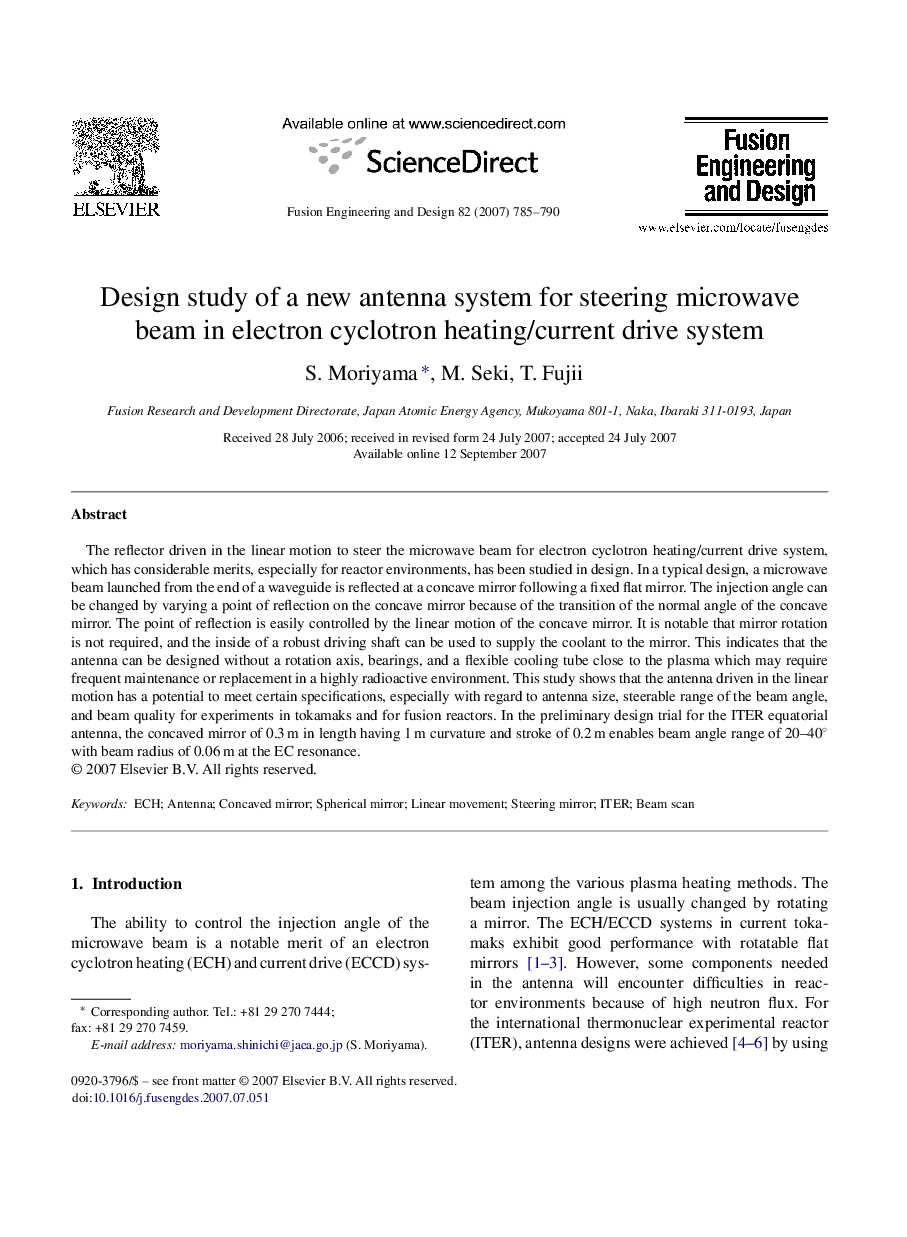| کد مقاله | کد نشریه | سال انتشار | مقاله انگلیسی | نسخه تمام متن |
|---|---|---|---|---|
| 273252 | 505042 | 2007 | 6 صفحه PDF | دانلود رایگان |

The reflector driven in the linear motion to steer the microwave beam for electron cyclotron heating/current drive system, which has considerable merits, especially for reactor environments, has been studied in design. In a typical design, a microwave beam launched from the end of a waveguide is reflected at a concave mirror following a fixed flat mirror. The injection angle can be changed by varying a point of reflection on the concave mirror because of the transition of the normal angle of the concave mirror. The point of reflection is easily controlled by the linear motion of the concave mirror. It is notable that mirror rotation is not required, and the inside of a robust driving shaft can be used to supply the coolant to the mirror. This indicates that the antenna can be designed without a rotation axis, bearings, and a flexible cooling tube close to the plasma which may require frequent maintenance or replacement in a highly radioactive environment. This study shows that the antenna driven in the linear motion has a potential to meet certain specifications, especially with regard to antenna size, steerable range of the beam angle, and beam quality for experiments in tokamaks and for fusion reactors. In the preliminary design trial for the ITER equatorial antenna, the concaved mirror of 0.3 m in length having 1 m curvature and stroke of 0.2 m enables beam angle range of 20–40° with beam radius of 0.06 m at the EC resonance.
Journal: Fusion Engineering and Design - Volume 82, Issues 5–14, October 2007, Pages 785–790